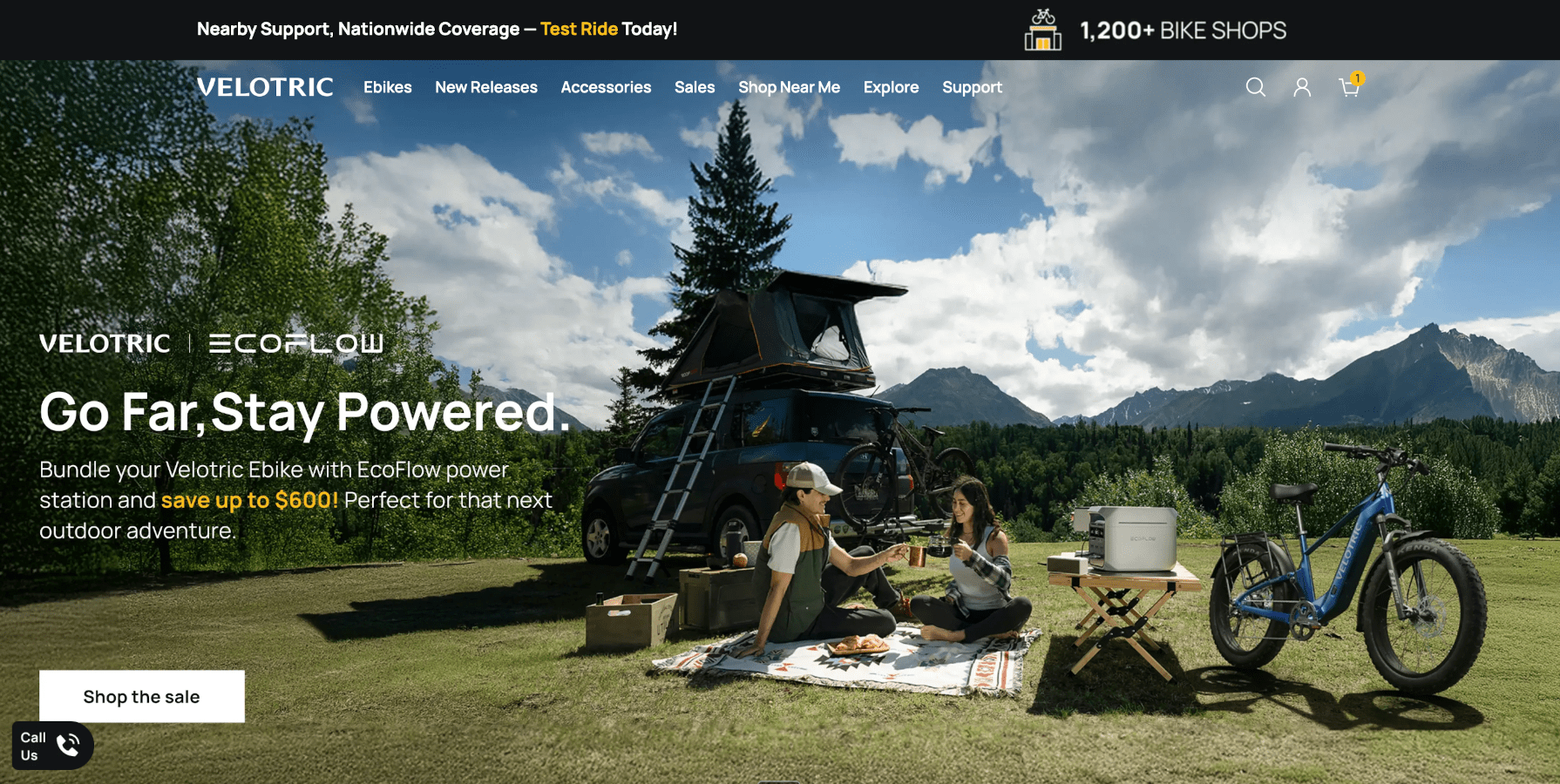
Company Overview
Velotric is a premium electric bicycle company founded in 2021 by former Lime hardware executives. The company specializes in high-value e-bikes ranging from $1,199 to $2,199, offering models across multiple categories including commuter bikes (Discover series), fat tire bikes (Nomad series), and cargo e-bikes (Packer series). With a mission to make premium e-bikes accessible to all, Velotric has rapidly grown to become one of America's fastest-growing e-bike brands.
The company operates through both direct-to-consumer online sales and a growing network of over 500 retail dealers across the United States. Their product lineup includes over 15 models, all featuring UL safety certification and proprietary Velopower technology, positioning them in the premium entry-level segment of the market.
Challenges
When MAI began working with Velotric in February 2025, the Google Ads account faced significant structural and performance challenges:
1. Generic Campaign Structure
Velotric was relying heavily on generic campaigns without proper segmentation. Their Shopping campaigns ran all products in a single campaign with one ad group, making it impossible to optimize budget allocation or adjust bids based on product performance. Search campaigns similarly lacked granular organization, mixing brand terms with non-brand keywords in broad match configurations.
2. Conversion Tracking Issues
The account had two primary purchase conversion actions that were double-counting conversions. There was significant discrepancy between Google Ads reported ROAS and actual Shopify order data, with conversion values being heavily skewed by wholesale orders that distorted campaign optimization signals.
3. Limited by Budget with Poor ROAS
Despite being limited by budget across campaigns, the account was achieving suboptimal ROAS. The overall account ROAS fell significantly short of Velotric's target.
4. Lack of Strategic Insights
The team needed a strategic partner who could provide deep insights on product trends rather than just generic performance metrics. They wanted to understand which specific products and categories drove performance, how to capitalize on seasonal trends, and how to effectively compete in the competitive e-bike market.
The MAI Difference
MAI's approach began with a comprehensive account audit to understand intent and category performance differences, identifying significant optimization opportunities through data-driven analysis.
Strategic Campaign Restructuring
Search Campaign Segmentation: MAI reorganized search campaigns by intent and category, creating separate campaigns for:
- Brand terms (achieving highest control and lowest CPC)
- Product/category terms with themed ad groups
- Competitor terms (isolated for testing)
- Each product line received dedicated campaigns to enable granular budget control
Shopping Campaign Architecture: Instead of one campaign for all products, MAI created:
- Individual campaigns based on machine-learning driven grouping
- Campaigns organized in different priority tiers and budget pools
- Separate campaigns for high-performers vs. low-performers
- Product segmentation enabling seasonal adjustments
Advanced Optimization Techniques
Bidding Strategy Mix: MAI implemented a sophisticated mix of bidding strategies:
- Target ROAS for proven performers
- Max Clicks for new product launches to gather data
- Enhanced CPC for competitive terms
- Strategic bid adjustments based on product performance data
Feed Optimization: Based on data analysis showing that products with clear use cases and selling points had higher CTR and conversion rates, MAI optimized product titles and descriptions in the Google Merchant Center, adding keywords and conducting A/B tests to improve performance.
Budget Allocation Framework: MAI created a data-driven budget allocation model that:
- Prioritized high-ROAS product lines
- Allocated spend based on product priorities
- Organized campaigns in budget pools for easier management
- Enabled quick pivots during promotional periods
Results
Campaign-Specific Improvements:
Search Campaigns:
Cost reduced by 9% while value increased by 146%
ROAS improved by 172%
Shopping Campaigns:
Cost reduced by 50% while maintaining strong performance
Value decreased only 14.7% despite 50% cost reduction
ROAS improved by 58%
Product-level optimization enabled better seasonal adjustments
Strategic Achievements:

Promotional Period Success: During promotional periods including Prime Day, MAI's optimized structure enabled Velotric to hit record sales by quickly scaling successful campaigns while maintaining efficiency.
Budget Efficiency: The restructured campaigns eliminated budget constraints on high-performing campaigns while reducing waste on underperformers, achieving the goal of spending "as much as possible" at the new ROAS target.
Product Launch Support: MAI's segmented structure successfully launched new products including N2X, B1, and F1+ models, with N2 and F1+ quickly becoming top performers in both cost and ROAS.
Conclusion
Through strategic campaign restructuring, advanced optimization techniques, and data-driven decision-making, MAI transformed Velotric's Google Ads performance. The partnership demonstrates how proper campaign architecture, combined with continuous optimization and strategic insights, can dramatically improve performance even for accounts with strong baseline results.
By moving beyond generic campaign management to provide deep product-level insights and strategic guidance, MAI proved to be the strategic partner Velotric needed to achieve their aggressive growth goals in the competitive e-bike market.


 Adam Zhang, CEO, Velotric
Adam Zhang, CEO, Velotric